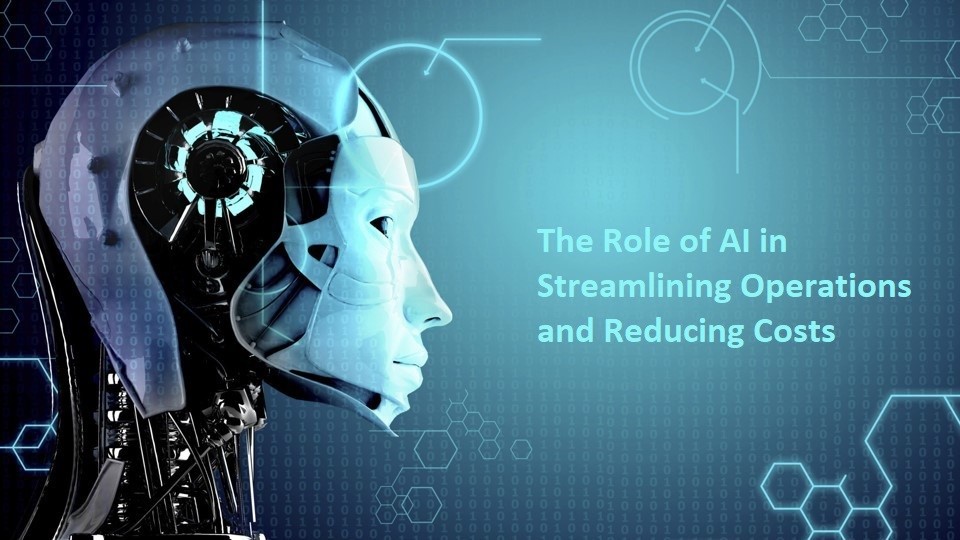
Artificial Intelligence and Traditional Automation
Traditional automation involves rule-based systems for repetitive tasks without human intervention, done through tools such as scripts or data entry. While it is effective for simple tasks, it lacks adaptability and decision-making capabilities beyond set scenarios. In contrast, AI-driven automation uses artificial intelligence to learn from data over time, handling complex tasks such as pattern recognition and prediction. It can analyze large data sets, identify trends and make real-time adjustments, capabilities that traditional automation lacks. The main difference is flexibility and intelligence, as AI-driven automation can process unstructured data, evolve through machine learning, and provide insights, making it ideal for dynamic applications such as predictive maintenance and demand forecasting.
Also read: The Impact of Automation and Artificial Intelligence on Supply Chain Efficiency: Changing the Logistics of the Future
Integration of artificial intelligence and business systems
Cross-departmental AI integration involves embedding AI tools into CRM systems to gain insights into customer behavior and into ERP systems to optimize inventory management. This increases efficiency and collaboration. Continuous monitoring and training are critical for AI integration, and models need to be regularly retrained using new data to adapt to changes. Monitoring helps detect issues such as data drift that may affect model accuracy. Overall, embedding AI, leveraging cloud-based solutions and continuous monitoring are keys to successful integration of AI in the enterprise.
Artificial Intelligence Simplifies Operational Processes
1. Inventory control
The AI system monitors inventory levels in real time and triggers reorder alerts when inventory is low. Machine learning can predict demand fluctuations, align inventory with demand, and predict demand surges during holidays or events. AI-powered robots and storage systems organize inventory, manage processes and reduce errors to improve warehouse efficiency and order fulfillment.
2. Customer service and support
AI chatbots and virtual assistants handle routine inquiries and orders, reducing the need for human agents. They can also handle complex customer issues, improving response times and satisfaction. Sentiment analysis tools evaluate customer feedback to identify areas for improvement. Artificial intelligence routes customer inquiries based on urgency and preference, thereby increasing customer satisfaction.
3. Logistics optimization
Artificial Intelligence Development Services The field of logistics improves route optimization by analyzing traffic patterns, delivery windows and fuel costs to achieve efficient transportation, reduce travel time and operating expenses.
4. Financial management and auditing
Artificial intelligence automates financial reporting by collecting data and compiling real-time analytics, reducing manual work and improving accuracy.
Artificial Intelligence Enhances Customer Experience and Service
1. Leverage AI to improve customer support
AI-powered AI chatbots provide instant customer support, handling queries and resolving issues 24/7. They can handle large numbers of inquiries simultaneously, allowing human agents to handle more complex cases. Sentiment analysis tools assess customer sentiment and feedback, allowing businesses to respond promptly and improve service quality. AI systems automate problem classification and resolution, prioritizing urgent matters to resolve issues quickly and improve customer satisfaction.
2. Enhance customer data analysis
AI-driven data integration collects customer data from multiple sources to provide a complete behavioral view. Advanced analytics tools powered by artificial intelligence can identify patterns in customer behavior. AI also helps map customer journeys and analyze touchpoints that impact satisfaction. This enables businesses to enhance their strategy, product development and customer engagement, thereby improving the overall experience.
3. Real-time customer engagement
Artificial intelligence enables proactive communication through personalized messages and notifications. When a customer abandons their cart, it can send a follow-up message or provide an incentive to complete the purchase. AI-powered live chat support allows for instant engagement and escalation of issues to human agents when needed. Social media monitoring tools monitor brand mentions to enable real-time customer engagement, resolve issues and build brand loyalty. Overall, AI improves customer satisfaction through timely and personalized interactions across different channels.
Application of artificial intelligence in financial management and decision-making
1. Enhance financial analysis and reporting
Artificial intelligence can process and analyze large amounts of financial data in real time, helping to generate timely reports. It automatically creates financial reports, saving time and ensuring accuracy. Artificial intelligence improves forecast accuracy and data interpretation.
2. Fraud detection and prevention
AI builds profiles of consumer behavior to identify unusual activity, such as large cash withdrawals from unfamiliar locations. To protect sensitive financial data and reduce the chance of data breaches, enhanced security methods using artificial intelligence include encryption, machine learning development, and biometrics.
3. Risk assessment and management
Risk analysis uses artificial intelligence model To help businesses assess risk exposure and develop mitigation plans, historical data is analyzed to uncover patterns in credit, market and operational risks. Businesses can use AI technology to stress-test financial models and simulate economic scenarios to prepare for adverse events. By evaluating different data sources to create more accurate credit scoring models, AI can improve credit assessments, improve loan selection, and reduce default rates.
Challenges and considerations for implementing artificial intelligence
1. Integrate with existing systems
Many organizations use outdated legacy systems that may not be compatible with AI technology, creating integration challenges. Interoperability is key to maximizing the benefits of AI and requires planning and resource allocation for integration. Implementing AI involves changes to work processes and requires effective change management to ensure employee understanding and acceptance, minimizing resistance to change.
2. Skills gaps and training
Organizations must invest in training programs to prepare existing personnel to successfully use AI. Cross-department collaboration between IT, data science, and business operations can help close the skills gap and drive innovation in AI implementation.
3. Cost and ROI considerations
Organizations must carefully evaluate the costs of AI deployment, including technology, infrastructure and talent expenses. Balancing costs and benefits is critical to ensuring investments in AI are aligned with overall company plans.
About the author
Ankit Patel is the CEO of Wappnet Systems, a leading software development company Specializing in Artificial Intelligence, Web3, Blockchain and Mobile Application Development. His years of experience in the IT industry drive innovation and deliver cutting-edge solutions to global enterprises. He is committed to delivering advanced technology solutions to enterprises, and his strategic vision will continue to shape the future of digital transformation across industries. follow him Facebook, twitterand LinkedIn.











Leave a Reply Cancel reply
You must be logged in to post a comment.